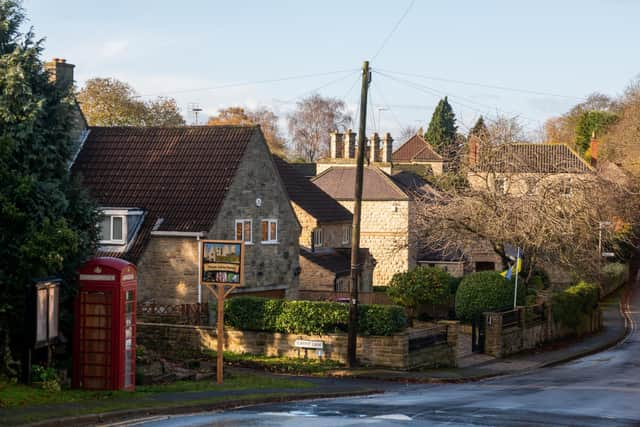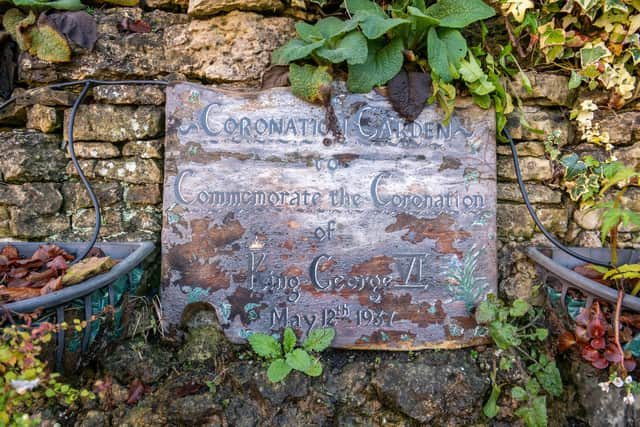Village of the Week: Elizabethan ruins and Roman routes at South Yorkshire's Thorpe Salvin
But Thorpe Salvin, a small village that comes under the borough of Rotherham certainly has - and a load of other history to boot.
The village gets its name that we know today from the old Norse word for farm, which is Thorpe, and Salvin is a reference to a 13th century lord of the manor who went by the name of Ralph Salvain.
Advertisement
Hide AdAdvertisement
Hide AdHowever, according to parish history and records, Thorpe Salvin can be traced back to 860-880 and the founding of a Danish settlement.


Thorpe Salvin is also listed in the 1086 Domesday Book and in part with Conisbrough, Laughton and Tickhill which aren’t too far away.
Today, village life seems to be centred around Worksop Road which runs through the village, leading you the local pub, The Parish Oven, St Peter’s Church, which we will revisit as apparently it is amongst the 1000 best churches in England and an old red phone box, which having long since been deemed surplus to requirements for making calls is now a little local library.
Houses, dotted around Worksop Road and Common Lane range from farms to small-holdings, cottages, terraces, traditional semis and newer, but established looking, sprawling pads.
Advertisement
Hide AdAdvertisement
Hide AdOn a maybe not so wintery and windy week you would find the streets adorned with hanging baskets, blooms and ivy and roses over the doors.


On several previous occasions Thorpe Salvin has triumphed at Village in Bloom contests. Undoubtedly this has been helped by its rural location with sprawling green fields and country lanes that surround it.
They are the type with barely space for one car to pass but provide the transport links to the nearby villages of Harthill, Kiveton Park and Netherthorpe.
One of these is Packman Lane which is thought to be part of ancient Roman route between Lichfield and Doncaster.
Advertisement
Hide AdAdvertisement
Hide AdWith such a rural location does unfortunately come some problems and it was reported last September that there had been deaths of two badgers at Thorpe Salvin and Maltby which left villagers upset, the police investigating and Dr Alan Billings, the Police and Crime Commissioner for South Yorkshire calling for a rural crime team.


Other than that village life seems steady and quiet and somewhat sought after.
Houses are rarely for sale and when they are, they are not cheap and crime figures aside from the above, are enviably low compared to some places.
In November last year there were three crimes listed within a mile of Common Road – one of the village’s main streets.
Advertisement
Hide AdAdvertisement
Hide AdThorpe Salvin Parish Council is also at the heart of village life and meets each month whilst also carrying out other roles for the benefit of the village and residents.


On March 22, 1949, Sorby Field was kindly gifted to Thorpe Salvin Parish Council by Mary Louisa Sorby of Thorpe Hall, and the recreation area is maintained by the parish council.
The authority is also the go to for consultation on matters such as planning applications that affect the village as well as monitoring the state of local footpaths and bridleways.
Going back to the Roman routes, back then the village population was small and still is today by some standards - and is in a decreasing trend.
Advertisement
Hide AdAdvertisement
Hide AdAt the 2001 census it was 502, in 2011 it was 476 and in 2021 it was 468.
Now the village has some properties that will set you back more than a million – but there was once a grander residence of them all – that of Thorpe Hall.
A local village news website says that Thorpe Hall, built in 1570, was the inspiration for “Torquilstone” in the novel “Ivanhoe” by Sir Walter Scott.


According to the story, Ivanhoe is imprisoned in Tourquilstone before being released by King Richard the Lionheart and Robin Hood.
Advertisement
Hide AdAdvertisement
Hide AdThe now ruined mansion was built for Henry Sandford who died in 1582. Heraldic panels on the gatehouse point to the date of construction being 1565-82.
In 1636, the hall was bought by Edward Osborne. When his descendant Thomas Osborne became Duke of Leeds, he moved out to a grander property in Kiveton Park, and the hall fell into disuse. It was partially demolished in the 1820s, with only the south front now remaining.
Thorpe Hall is now grade II listed.
They say don’t they – that most of village life is carried out in the local church or the local pub - or both and here is no different.
The Parish Oven was built and opened around the 1970s and prior to that, Thorpe Salvin didn’t have a pub. In 2007, The Parish Oven was voted ‘Pub of the Season’ for winter 2007 by the Rotherham Campaign for Real Ale and its re-opening in 2018 after a refurbishment was very much welcomed by regulars.
A little further down the way is St Peter’s Church.
Advertisement
Hide AdAdvertisement
Hide AdIt was built in 1130 and has had additions throughout the 1300s, 1400s and 1600s.
St Peter’s has been named among England’s 1,000 best churches due to its imposing and quaint appearance and also for its distinguishing period and historical features.
It has some ‘must see’ features, says The National Churches Trust, so look out for the impressive Tudor half timbered porch which has protected the stunning Norman carved doorway for 450 years.
The gem of the church is the font, which is 12th century and one of the finest in the country. It displays scenes of the seasons in great detail.
Advertisement
Hide AdAdvertisement
Hide AdOther things to see at the church include the chained Bible, the early roof line, stone sedilia and various memorials including those to the Sandford family which date over three centuries.
The north chapel was added in 1380 as a chantry by Sir William Sandford. The north wall has been altered to take the medieval windows which came from Worksop Priory and were reglazed in about 1840.
